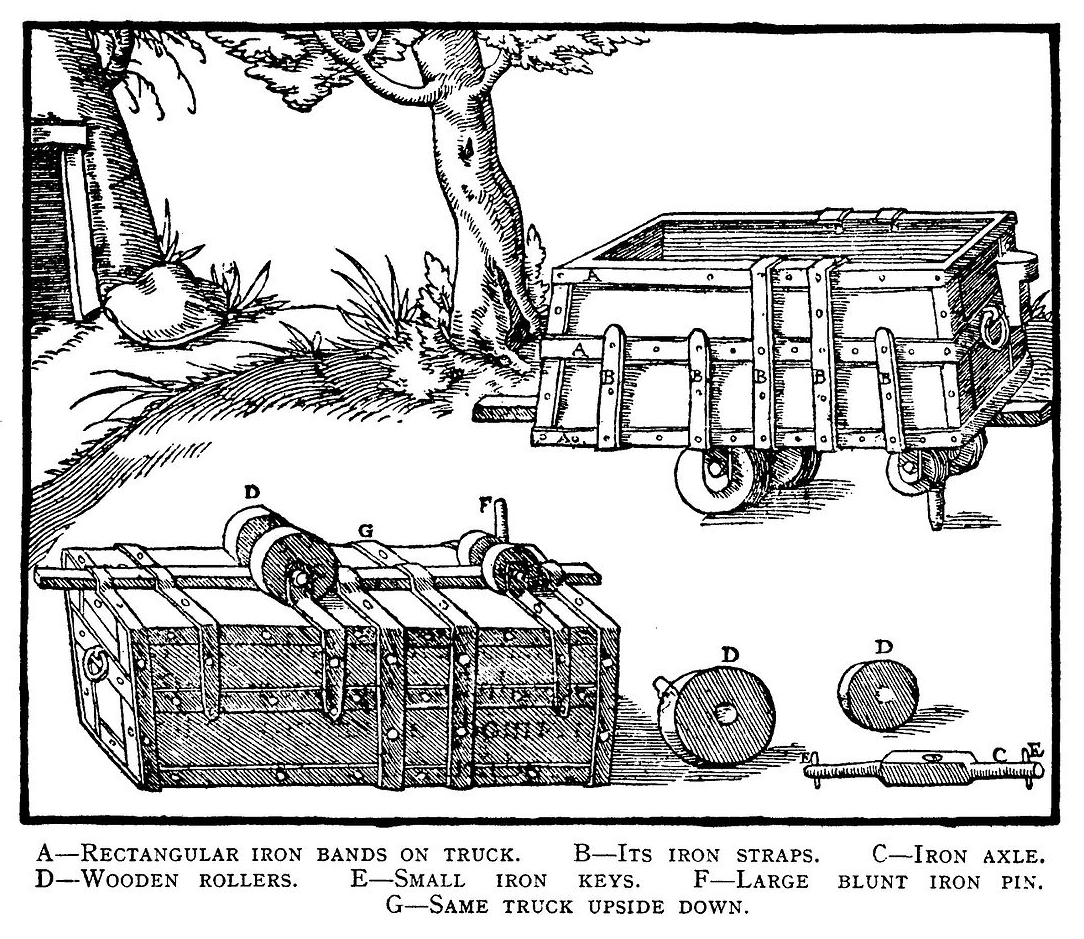
Railroads have played a key role in shaping human history, fundamentally changing transportation, trade, and travel. Although the common misconception is that rails are a fairly recent invention, in fact their origins date back to the ancient Greeks, who pulled their carts in priorly dug out tunnels (Wolmar, 2019). Admittedly, these are not rails as we know them today, but they fulfilled a similar role to the ones we know now – marking a specific route for wheeled objects.
The first tracks, which were made of wood, date back to 1350 and were discovered on the grounds of a church in Baden-Württemberg (Wolmar, 2019). As the years went by and mining developed, people looked for ways to transport materials more efficiently. Therefore, in the 16th century, a mining truck (called Leitnagel Hund) was invented in Germany, which revolutionized the transportation system (Wolmar, 2019). The truck moved on wooden tracks or planks laid along the ground, which enabled faster movement of minerals and other materials (Wolmar, 2019).

To further maximize the efficiency of transportation, rails were invented. Interestingly, the first of these were also discovered in Germany and date back to the early 18th century (Wolmar, 2019). However, it was not only Germany that developed its railroads. In the 18th century, Great Britain, drawing on German inventions, expanded its system of wagonways, which allowed them to transport materials to and from the mines more quickly, thereby contributing to economic growth during the industrial revolution (Wolmar, 2019).
It was not until the early 19th century, as a result of the invention of the steam locomotive, that wrought iron rails began to be produced (Bonnet, 2005, p. 57). The rails could bear the weight of the locomotive and the wagons (Bonnet, 2005, p. 57). Although they were still mainly used for transporting freight, some of them also occasionally carried mine or port workers. The breakthrough for passenger railroads came in 1825, when the first public rail line, Stockton & Darlington Railway, opened (Curley, 2011, p. 4). The first steam locomotive, built by George Stephenson, carried freight and passengers, and thus marked the beginning of the era of steam railroads (Curley, 2011, p. 168).
In 1857, Robert Forester Mushet introduced the first steel rails to the market (Liu & Jamieson, 2022). Despite initial manufacturing difficulties, steel rails gained an advantage over those made of iron due to their greater durability (Bonnet, 2005, p. 1). Steel continues to be used today (Bonnet, 2005, p. 67).
The 20th century saw further innovations in rail technology, including the electrification of railways and maglev (magnetic levitation) trains (Curley, 2011, p. 45). With the development of railroads, the need for standardization became more pressing. Concrete sleepers replaced wooden ones, offering better stability and longevity and continuous welded rail (CWR) became a standard (Curley, 2011, p. 94; Bonnet, 2005, pp. 70-71). This introduction of standardized components and construction methods significantly improved manufacturing efficiency.